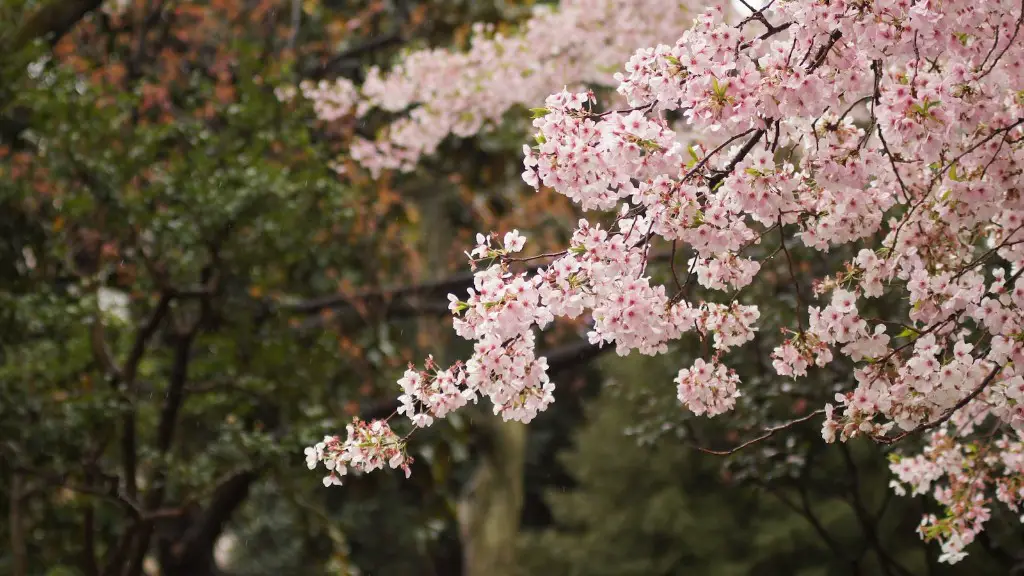How to Take Care of Areca Palm Tree
The Areca Palm tree, a tropical beauty, is one of the most popular indoor plants for decorating homes, businesses, and patios. With feather-like foliage, it is a visually stunning addition to spaces. Powered by its ability to grow more than three feet in a year, the Areca Palm tree will bring life and vibrancy to its space in no time.
It is not just visual beauty, the Areca Palm tree is known to help purify air and make the environment more conducive to healthy living. According to a report by NASA, the Areca Palm tree helps remove indoor air pollutants like carbon monoxide, formaldehyde and xylene. These pollutants can have serious adverse effects on health, and the Areca Palm tree, with its natural aesthetic and air purification properties, is a great solution.
The Areca Palm tree requires minimal maintenance and will thrive in moderate light, including some direct sunlight, and a well-draining soil. It will thrive when temperatures range between 65 and 75 degrees Fahrenheit, but it can tolerate lower temperatures for brief periods. It can also be placed in an easily-accessible place, like a corner of the room if close access to light is required. As the Areca Palm tree can reach up to ten feet in height, it may need to be trimmed and repotted every three to five years.
Considering its air-purifying attributes and vibrancy, as well as its low maintenance requirements, the Areca Palm tree is a great choice for any space. By understanding the basics of Areca Palm tree maintenance and keeping an eye on necessary tasks and changes, it can remain healthy and vibrant and add a special touch to the room or space.
Watering and Fertilizer
Water is the lifeblood of any plant, and the Areca Palm tree should be watered to encourage healthy and vibrant foliage. The best way to water the Areca Palm tree is to wait until the top layer of soil is slightly dry before lightly moistening the soil with distilled water. Watering the Areca Palm tree too often or with infrequent heavy watering can lead to root rot, yellowing leaves, or even death.
Typically, Areca Palm trees require fertilizer once a year, usually in the spring. Slow-release fertilizer with nitrogen, phosphorous and potassium is a great choice for the Areca Palm tree, although liquid fertilizer can also be used once a month. Too much fertilizer can damage the plant and make it prone to diseases.
Light and Humidity
Light is the single most important factor in the pleasant and healthy growth of the Areca Palm tree. It needs bright, indirect sunlight, which is why it can be grown both indoors, where the sun is filtered through the window, or outdoors, preferably in partial shade. An optimal light setting for the Areca Palm tree is indirect light for about 6 hours every day.
Excessively dry air can take a toll on the health of the Areca Palm tree. High humidity can help to keep the plant’s leaves from drying out and turning brown. To increase humidity around the Areca Palm tree, it is important to mist the leaves occasionally. This will prevent the leaves from turning brown.
Pruning and Re-potting
Since the Areca Palm tree rapidly grows in size, it will need to be pruned and re-potted every 2-5 years. During the pruning process, it is important to make sure that the palm is not trimmed too severely, as it can affect its health. It is good practice to cut off yellowing leaves as they can spread disease to other parts of the plant. In addition, it is important to ensure that pruning takes place in the fall or winter when the Areca Palm tree is in its dormant stage.
When it comes to repotting the Areca Palm tree, it should be done in a pot that is no more than two inches larger in diameter than its current one. Choose a pot with adequate drainage holes and a soil mix that will provide the Areca Palm tree with the nourishment it needs to maintain a healthy stature.
Pests, Diseases and Other Care Tips
The Areca Palm tree is notoriously prone to pests such as scale insects, mealybugs, and mites. Regularly inspect the palm for any traces of pests and treat them according to instructions from your local nursery or plant store if necessary. Keeping the Areca Palm tree away from direct sunlight may also keep pests away.
The Areca Palm tree can also be prone to root rot and fungal diseases, which can be treated with fungicide or insecticide. Pruning away dead or yellowing leaves as soon as they can be seen can help to minimize the chances of spreading any potential diseases that may affect the Areca Palm tree.
Finally, it is important to know that the Areca Palm tree should not be placed in a windy area, as this can dry out the leaves and cause them to yellow, brown, or die. It is best to shield the Areca Palm tree from harsh winds or direct drafts of cold or hot air.
Choosing Your Plant
Picking the right Areca Palm tree is essential for its healthy growth and vibrancy. When buying an Areca Palm tree, look for one with healthy foliage that has not yet turned yellow or brown. It should have a sturdy stem, without any cracks or uneven spots, and there should be no signs of wilting or drooping leaves.
The size of the container should be considered. If a large container is chosen for a small Areca Palm tree, it can become root-bound and will not be able to absorb sufficient amounts of moisture and air from the soil. In general, the Areca Palm tree should be placed in a container that is just large enough to accommodate its roots.
Safety Measures
When handling an Areca Palm tree, it is important to observe safety precautions. Gloves should be worn when pruning and handling leaves, as the leaves are sometimes covered in fine hairs which can irritate the skin. In addition, when repotting, the pruned leaves and roots can be sharp, so it is important to wear gloves and long sleeves to avoid injury.
Areca Palm trees should also be kept away from children and pets, as they can be poisonous and may cause skin irritations. The palm leaves can be sharp and can cut upon contact, and the plants are prone to pests and diseases which can be easily spread by contact.
Treating Your Areca Palm
When caring for an Areca Palm tree, it is important to follow the right cultural requirements and practices in order to maximize its life span and health. Watering, feeding, and general upkeep can ensure a healthy and strong Areca Palm tree over the long term. Understanding the plant’s needs and adhering to safety measures can also ensure an enjoyable experience of growing a tropical beauty.


